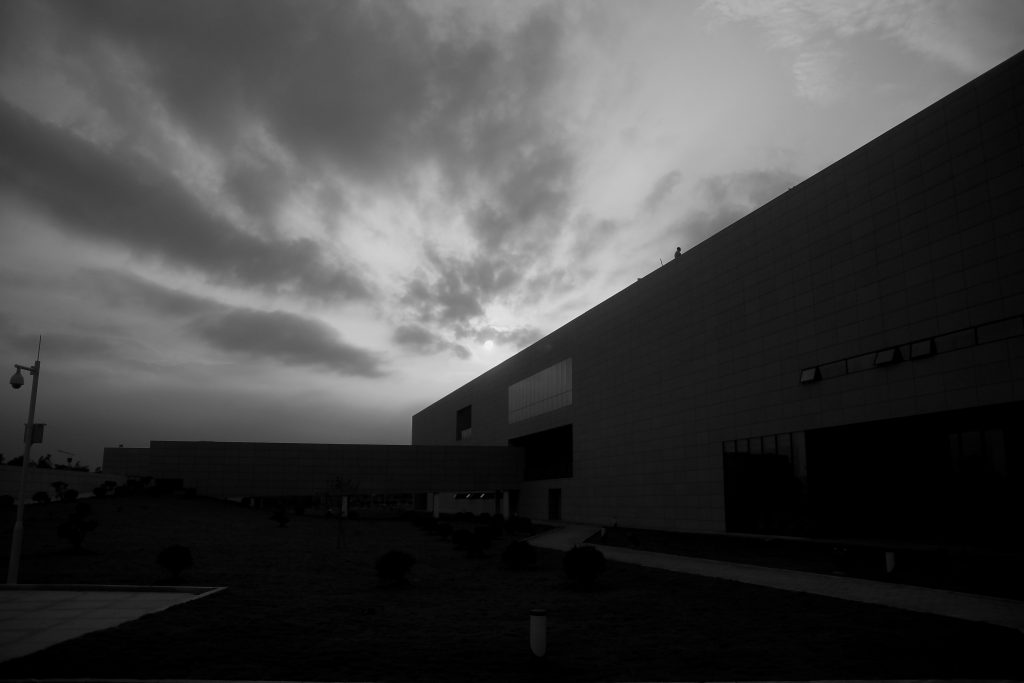
Guangzhou Oriental Museum
If you never visit China, You won’t truly know vast and expansive
If you never visit Guangzhou, You won’t truly know open and inclusive
If you never visit Guangzhou Oriental Museum, You won’t truly know breath-taking captivation
Guangzhou Oriental Museum is one of the most extensive and comprehensive art museums within China. The exhibitions include ancient porcelain, bronze wares, paintings, etc. Each piece has passed the test of time, and remains superior to its contemporaries. Standing in the broad halls, you can still feel the pulse of those who came before and the art of their lives. At the same time you can also vividly sense and experience history.
Guangzhou Oriental Museum anchors the Eastern side of the Cultural Village of Guangzhou’s Panyu District. It is nestled between the beautiful Oriental Museum Bluffs and the quietly flowing waters of the Li River. To the West lies the refined Harmony Square and across the water is sleek Asian Games Beach Volleyball Complex.
Guangzhou Oriental Museum’s exhibitions primarily include China’s ancient porcelain which is representative of the prowess of ancient Chinese civilization; most specifically, the Yuan Dynasty’s underglaze blue porcelain which served as a connecting link between the China of old and recent imperial China. Moreover, our museum strives to provide a multi-faceted approach to enjoying Yuan Dynasty porcelain, in which you can observe not only the aesthetic beauty, but also learn its historical value, technical value, investment value, and learn to critique it.
Guangzhou Oriental Museum exhibits several hundred pieces that span over 3000 years of history. They are divided into six chronological exhibition halls which include: Bronze Wares, Tang and Song Dynasty Wares, Yuan Dynasty Porcelain, Ming Dynasty Porcelain, Qing Dynasty Porcelain, and Painting and Calligraphy. These halls and exhibitions all go to show the rich, deep history and beautiful art from throughout China’s past.
Bronze Ware Hall: Using history as your guide, you first encounter the bronze wares of the Western Zhou Dynasty, The Spring and Autumn Period, and The Warring States Period with vastly varying shapes they are truly incomparable. Next, you will encounter the very simple yet refined potteries from the Qin and Han Dynasties. Finally, you will enjoy Qing Dynasties exquisite bronze bodied cloisonné wares that take western colors and apply them in Chinese taste and adornments. Then you will have a feel of the ancient Chinese’s ability to use and mold nature, and understand their progression in society, lifestyle, and art.
Tang and Song Dynasty Hall: Using aesthetics as your guide, you will first come across the Tang Dynasty’s graceful gold gilded bronze wares. Next you will take in the vibrant yet simple sights of the Tang Dynasty’s ‘Sancai’ or Three-colored porcelain wares. Finally, you will get to enjoy the beautiful porcelains produced by the five famous kilns of the Song Dynasty. Then you will have seen how the workers turned plain soil into the object that won China its name, and feel the breadth and grandeur of China during the Tang and Song Dynasties.
Yuan Dynasty Porcelain Hall: Using creativity as your guide, and through the raw materials, techniques, formulation, and art of the Yuan Dynasty you will experience the great underglaze blue and colored porcelain wares that they completed. By doing this, you climb the proverbial staircase that connects the porcelain of old with the renowned porcelain that followed.
Ming Dynasty Porcelain Hall: Using refinement as your guide, you will see the blossoming of Jingdezhen’s common and imperial kilns as they competed for their share of the porcelain market. Here you will have the pleasure of taking in the beauty of underglaze, overglaze, ‘Doucai’ or complimenting color, and monochrome porcelain wares of the Ming Dynasty. You will also get a taste of the stories behind the emperors Hong Wu, Yong Le, Xuan De, and Cheng Hua.
Qing Dynasty Porcelain Hall: Using critiques as your guide, you will get a taste of the shapes, forms, glazes, paints, adornments, markings, ‘fen cai’ or famille rose, ‘falang cai’ or enameled, and bronze colored wares. This will help you to critique the greats: Kang Xi, Yong Zheng, and Qian Long, as well as see the decline of the late Qing, and even see the relationship of porcelain to the colorfulness of life.
Painting and Calligraphy Hall: Using art as your guide, you will need to look for the deep and vast meaning expressed by the Chinese painter. Within each small square world, try to understand the sky, the earth, mountains, water, people, and animals; and in turn feel their vividness. From there you will take the artistic journey of China’s greatest and most renowned painters (Wen Zheng Ming, Dong Qi Chang, Tang Yin, Ba Da Shan Ren, Lang Shi Ning (Giuseppe Castiglione), Zhang Da Qian, Fu Bao Shi, etc.)









